Shoulder Labral Tear
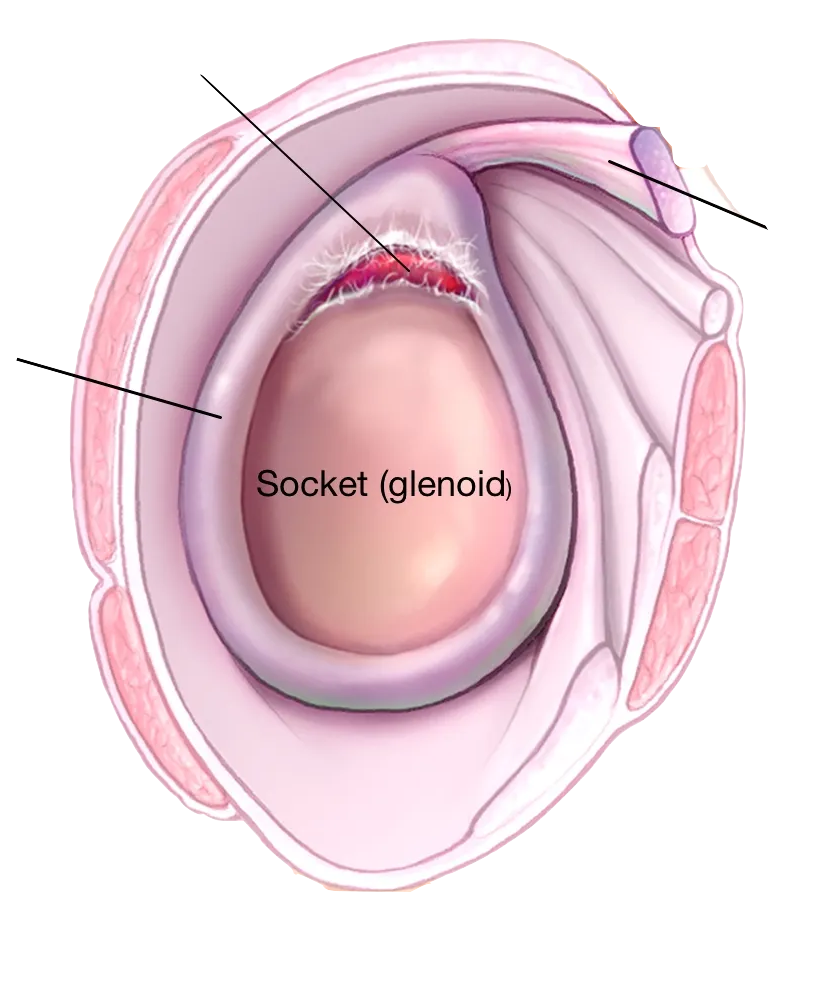
Labral Tear of Shoulder
A labral tear is a type of injury that can occur in the shoulder. It is often caused by a rotator cuff tear and can lead to considerable pain and loss of motion. If you have been diagnosed with a labral tear, this guide will provide you with information on what to expect and how to recover.
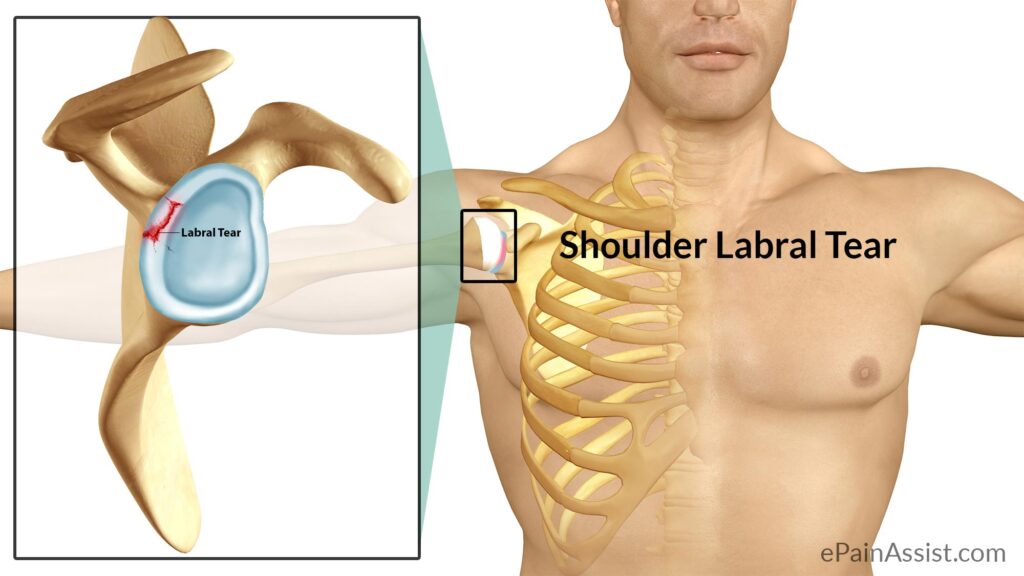
Labral Tear: An introduction
A labral tear is a common shoulder injury. The shoulder is a ball-and-socket joint that is held together by a number of different muscles, ligaments, and tendons. The labrum is a piece of cartilage that lines the socket of the shoulder joint and helps to keep the ball in place.
A tear in the labrum can cause pain and instability in the shoulder joint.
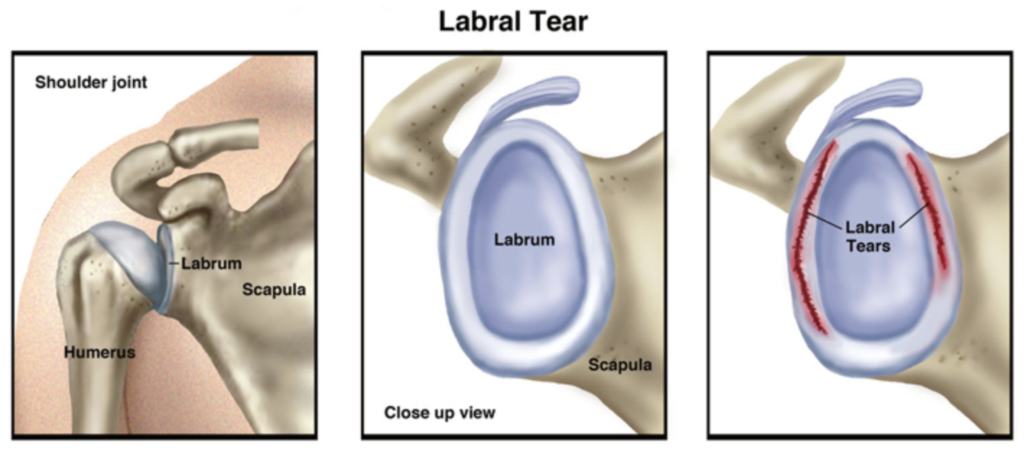
Causes of Labral Tears in shoulders
Labral tears are most often caused by overuse or repetitive motion, such as from throwing a baseball or tennis. They can also be caused by trauma, such as a fall on an outstretched arm. People who participate in overhead activities, such as swimming or weightlifting, are also at higher risk for developing a labral tear.
Symptoms of a Labral Tear
The most common symptom of a labral tear is a sharp pain in the shoulder. This pain is usually worse with movement and may be accompanied by a clicking or popping sensation. Other symptoms may include:
– Difficulty moving the arm
– Weakness in the arm
– Instability in the shoulder

Risk Factors for a Labral Tear
The most common risk factor for developing a labral tear is participating in activities or sports that put repetitive stress on the shoulder joint, such as baseball, tennis, or weightlifting. Other risk factors include:
-Previous shoulder injury or surgery
-Osteoarthritis in the shoulder joint
-Dislocation of the shoulder joint
-Loose or torn ligaments in the shoulder joint
-Bone spurs in the shoulder joint
-Instability in the shoulder joint
If you have any of these risk factors, it is important to talk to your doctor or orthopedic specialist about ways to help prevent a labral tear.
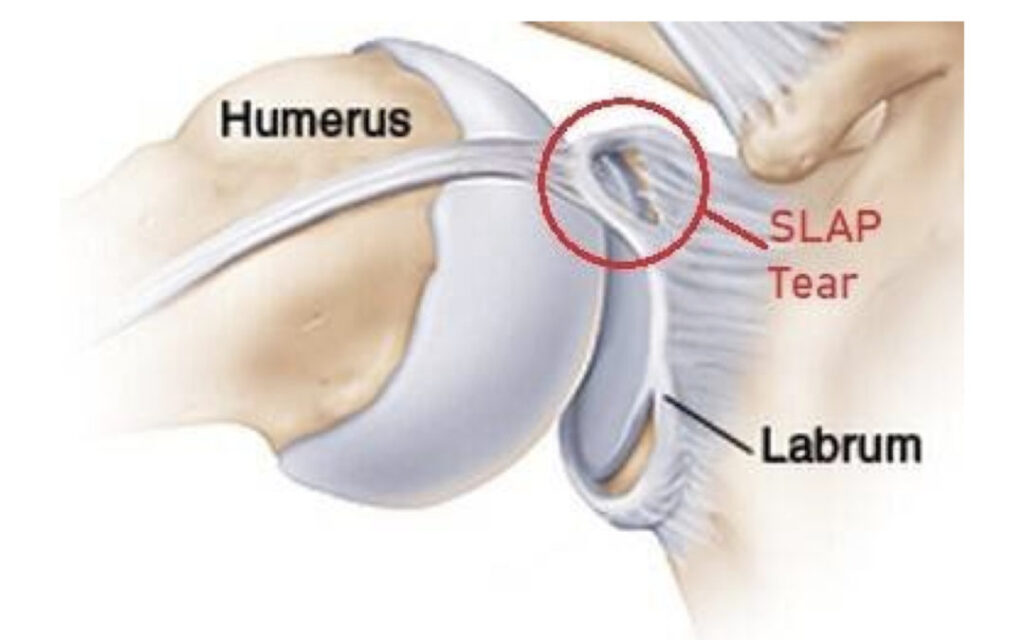
Diagnosis of Labral Tear
Diagnosis of a labral tear is typically done with an MRI. Your doctor will look for signs of a tear, such as loss of cartilage or fluid in the joint. He or she may also order X-rays to rule out other causes of your symptoms, such as arthritis. If your doctor suspects you have a tear but the MRI is inconclusive, he or she may recommend an arthroscopy. This is a minimally invasive surgery in which a small camera is inserted into the shoulder joint to look for signs of a tear.
Treatment options for a Labral Tear
Treatment options for shoulder or hip labral tears may vary depending on the severity of your tear. If you have a small or moderate tear, your doctor may recommend pain relievers and anti-inflammatory medication. They may also suggest physical therapy to help strengthen the muscles around your hip joint. If you have a large or complete tear, you may need surgery to repair the damage. Surgery can be done arthroscopically, which is a minimally invasive procedure, or open, which is more traditional surgery.
Recovery times vary depending on the type of surgery you have, but typically, it takes several months to fully recover.
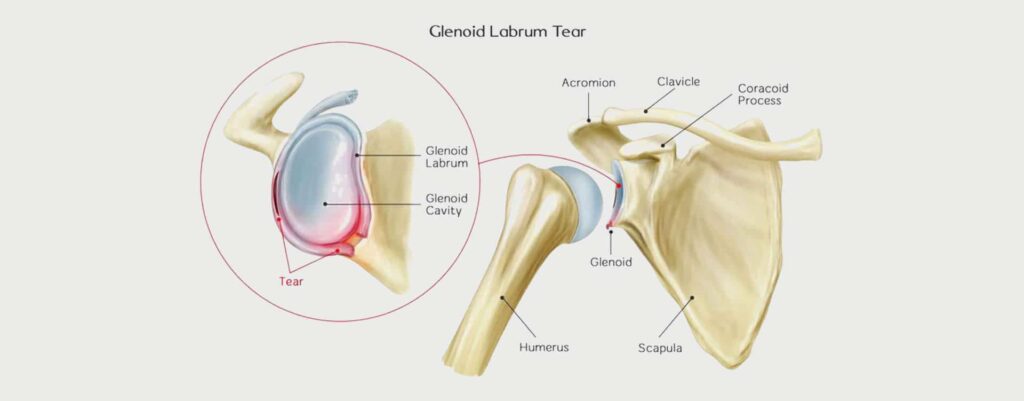
The long-term outlook for a labral tear patient
There is no one-size-fits-all answer to this question, as the long-term outlook for someone with a labral tear will vary depending on the individual’s age, overall health, and the severity of their injury. However, it is generally agreed that early diagnosis and treatment of a torn hip labrum or shoulder labrum can improve the chances of a full recovery. In some cases, surgery may be required to repair the damage. Physical therapy may also be recommended in order to help strengthen the muscles and joints around the affected area. With proper treatment, most people who suffer from a labral tear are able to return to their previous level of activity and enjoy a good quality of life.
How can you prevent a labral tear from occurring in the first place?
There are a few things you can do to help prevent a shoulder or hip labral tear from occurring:
- Use good form when lifting weights and participating in other activities that put stress on the shoulder joint.
- Avoid activities that require repetitive overhead motions of the arm, such as tennis or swimming.
- Strengthen the muscles around the shoulder joint to help support the joint and reduce stress on the labrum.
- Stretch the muscles and tissues around the shoulder joint regularly to keep them flexible and reduce strain on the labrum.
If you do experience a shoulder injury that results in pain, it is important to see a doctor or orthopedic specialist so they can properly diagnose and treat the problem. Early intervention can help prevent a more serious injury from occurring.
Frequently Asked Questions
- Trauma: such as fracture or dislocation.
- Overuse: Repetitive stress on the shoulder joint can cause the labrum to tear. This is common in athletes who participate in sports that require a lot of throwing or overhead activities such as baseball, football quarterbacks, tennis and volleyball players.
- Clicking, popping, or grinding sounds when the shoulder is moved
- Stiffness or loss of range of motion in the shoulder joint
- Instability or weakness of the shoulder
3 Ways to Level Up Your Rehab and Injury Prevention With Us




